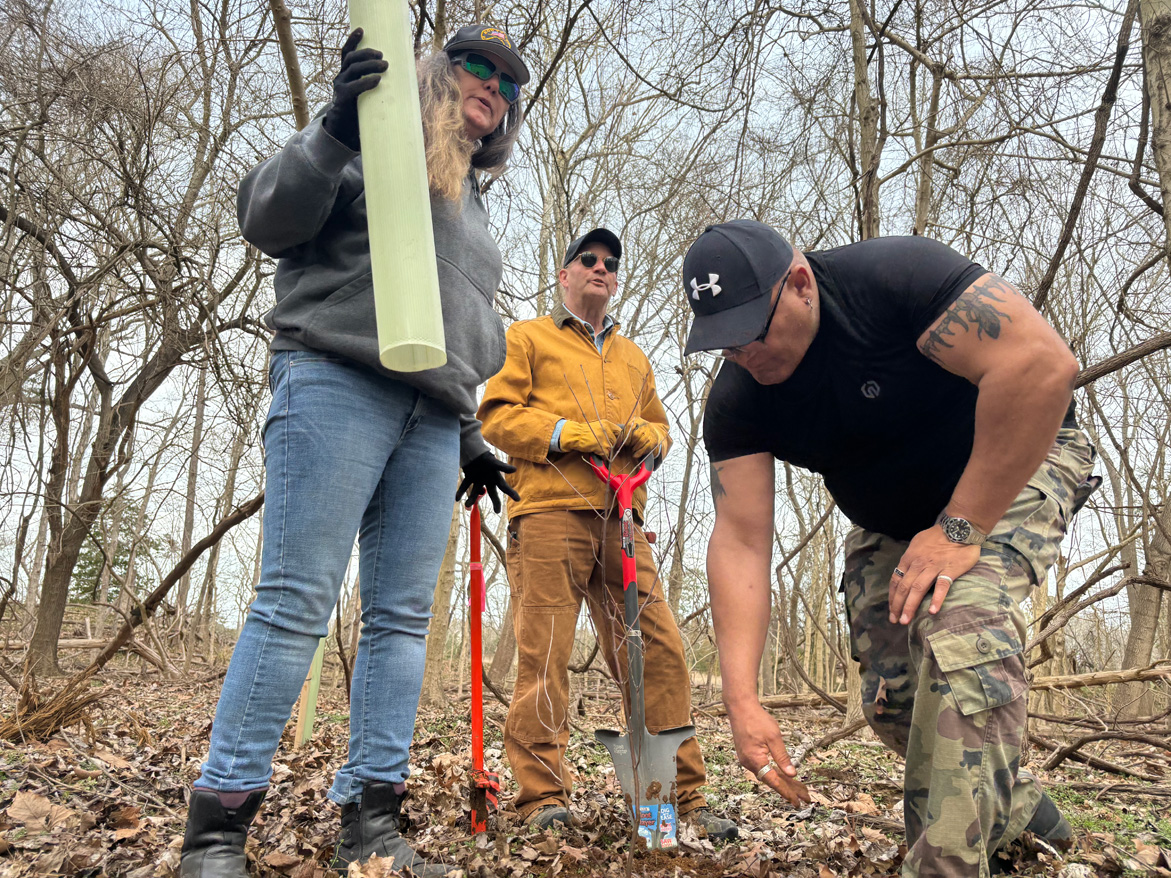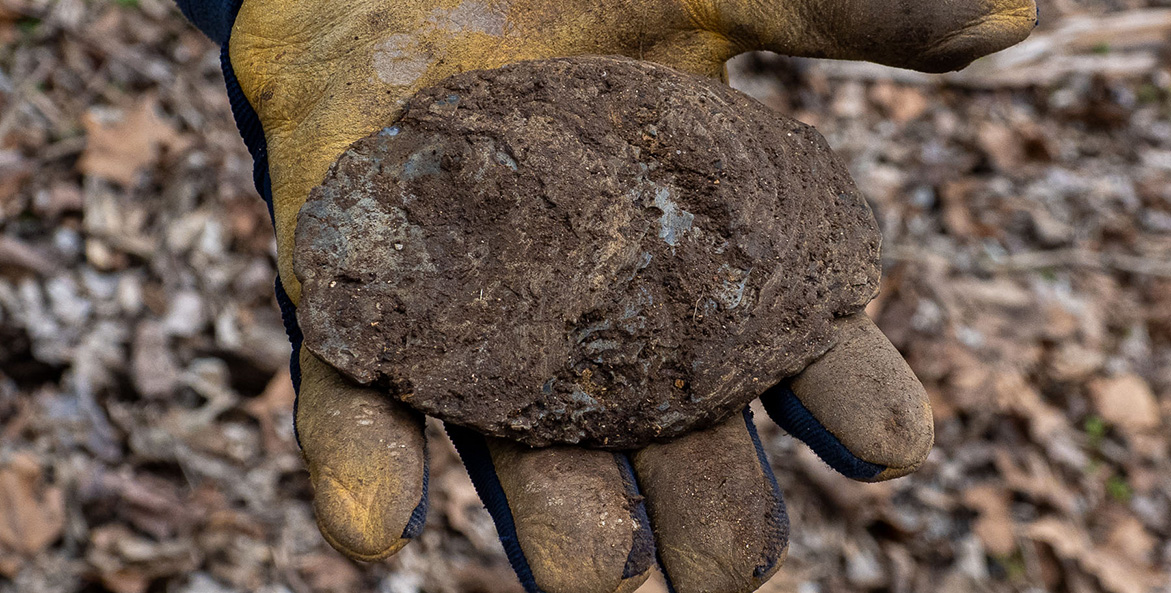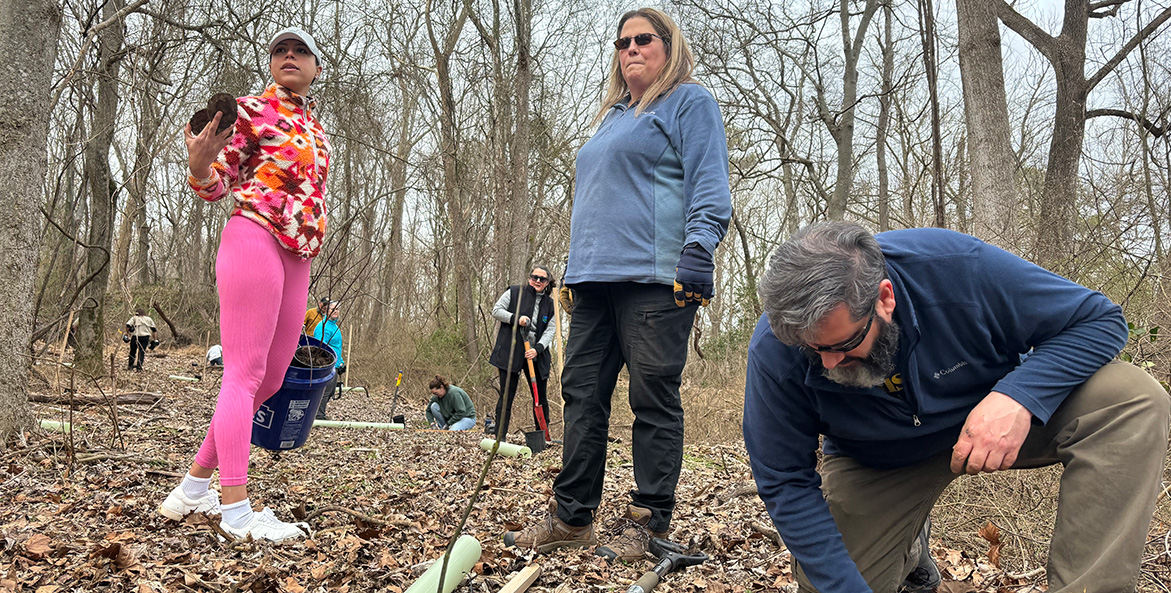Some tree plantings are about creating a new space. A new grove can transform a slice of neighborhood into something greener, more beautiful, and healthier for the environment and for people.
But in a forested patch of land along the Nansemond River in Suffolk, Virginia, those that planted native trees wanted to listen to the land as much as change it.
On March 1, dozens of sticks marked spots where baby trees would soon grow. Now cleared of invasive species and industrial debris like railway cars, the 18 acres within Mattanock Town is closer to telling its own, older story.
And many were on hand to listen. The March 1 tree planting gathered Nansemond Indian Nation officials, volunteers, the Virginia Department of Forestry, and the Chesapeake Bay Foundation to help further the Nansemond Indian Nation’s efforts to heal and deepen their physical connection to their ancestral riverfront land.
Considered the cultural heart of the Tribe, the Nansemond River never left the spirits of the Nansemond Indian Nation even after centuries of displacement that date back to the arrival of colonists in the 1600s.
“It’s incredible to feel the comradery and kindship for this project that is so valuable for the ecosystem,” Nansemond Indian Nation Chief Keith Anderson said. “It is a great honor to be a steward of this land.”
The tree planting was just a beginning. It kickstarted a multi-day project where a total of 450 native trees are expected to be planted.

Nansemond Indian Nation Chief Keith Anderson (right) and two volunteers participate in the planting. “It is a great honor to be a steward of this land," said Chief Anderson.
Vanessa Remmers/CBF Staff
Volunteers shoveled and patted soil for native black gum, hackberry, and witch hazel trees, replacing debris and an invasive species known as privet that previously dominated the property. The land became a breeding ground for the invasive species once the mining soil pits from a cement corporation stopped. The industry “fractured the connection between the upland forest, the high marsh, the low marsh, and the intertidal zones,” Katie Grigsby, CBF Restoration Coordinator, wrote in her Virginia Institute of Marine Science masters thesis on the subject.
“You couldn’t walk in this area just a short time ago because it was filled with invasive species,” CBF Virginia Executive Director Chris Moore said. “It is very exciting to see so many partners come together for this comprehensive restoration effort that stretches from underwater up to the land.”

Buried beneath the soil, volunteers found oyster and scallop shells as big as their palms.
Sue Mangan
“I feel that I am on sacred ground. I feel a spiritual connection as I’m here helping restore this land,” said Mary Hill, a tree planting volunteer and a member of the Chesapeake Oyster Alliance.
According to the Tribe, their name meaning "Fishing Point" comes from the Coastal Algonquian language spoken by their ancestors, who lived in settlements along the Nansemond River for thousands of years.
Following federal and state tribal recognition, the Tribe committed to reconnecting its people to the local waterways through a variety of projects including oyster gardening, community events, and tree plantings.

Virginia Communications & Media Relations Manager, CBF
[email protected]
804-258-1567



